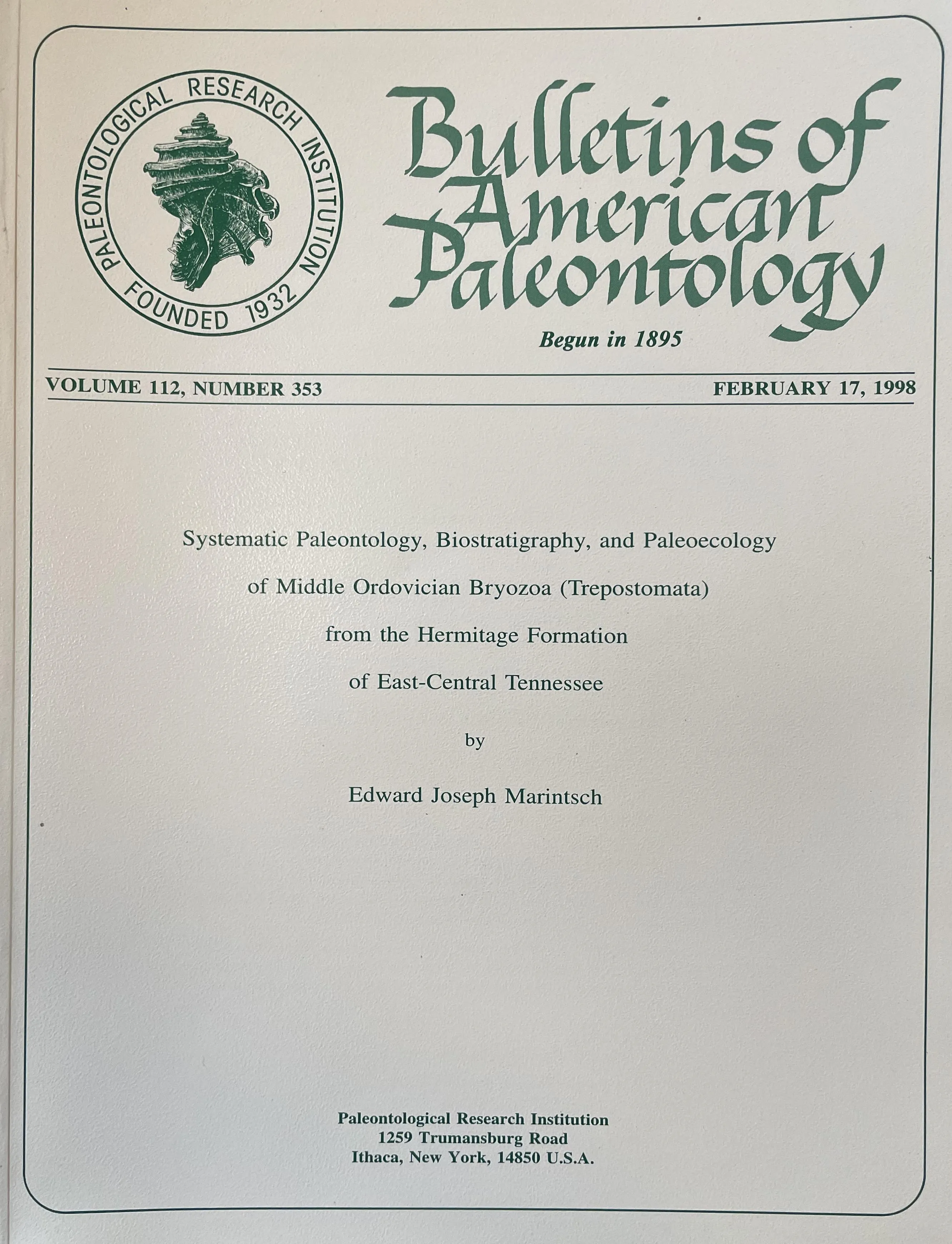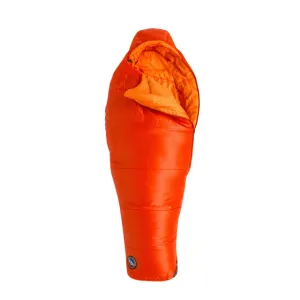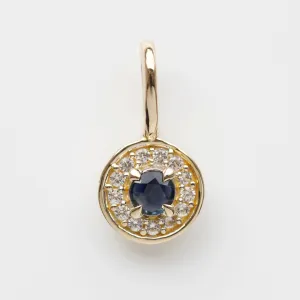Product Details
+Systematic Paleontology, Biostratigraphy, and Paleoecology of Middle Ordovician Bryozoa (Trepostomata) from the Hermitage Formation of East-Central Tennessee - BAP #353
The Hermitage Formation of East-Central Tennessee is stratigraphically situated between the Carters Limestone below and the Cannon Limestone above. It contains a diverse and abundant fauna dominated by trepostome bryozoans. Four continuous stratigraphic sections have been examined - two within the Sequatchie Valley of the Appalachian Plateau (Howard Cemetery and Wilson Branch) and two within the Valley and Ridge Province (Norris Lake IV and Chamberlain Branch). The Hermitage varies between 45 and 130 feet (13.7 and 39.6 m) (thickens to the east), and is composed of clean to argillaceous wackestones and packstones deposited in an open marine platform carbonate setting. The present study systematically descried the trepostome bryozoan fauna and takes note of their changing relative abundances and biostratigraphy within in each section. This is the first study of this type south of the plateau deposits in Kentucky for Middle Ordovician sediments younger than Blackriverian in age. The lower boundary of the Hermitage Formation is close to the underlying T-3 Bentonite providing an ideal starting point for such a biostratigraphic/taxonomic study since this bentonite is an isochronous surface upon which lateral and temporal distributions of these bryozoans can be based.
Within the Hermitage Formation, 36 species-group taxa have been recognized. These include 17 genera and 33 species which include 5 varieties. A new genus, Acantholaminatus, consists of new species A. typicus and A. multistylus. Other new species include Parvohallopora granda, Anaphragma hermitigensis, Peronopora weirae, Heterotrypa magnopora, H. subtrentonensis, H. exovaria, H. rugosa, Stigmatella distinctaspinosa, and Homotrypa tabulata. New varieties include Batostomella subgracilis var. robusta, and Parvohallopora granda var. inflata. Species previously described and found within the present study area include Bythopora dendrina, Batostomella subgracilis, Prasopora falesi, Eridotrypa mutabilis, Mesotrypa angularis, Parvohallopora pulchella, Homotrypa minnesotensis, H. flabellaris var. spinifera, H. subramosa, H. callosa, H. similis, H. tuberculara, ?Heterotrypa subramosa, Heterotrypa praenuntia var. simplex, H. praenuntia var. echinata, Cyphotrypa acervulosa, Peronopora mundula, Tarphophragma ampla, T. multitabulata, and Hemiphragma ottawaensis. Three species were not assined a trivial name and are identified herein as Monticulipora sp. A, Homotrypa sp. A, and Mesotrypa sp. A.
The new varieties assigned to various species (Parvohallopora granda var. inflata and Batostomella subgracilis var. robusta) are of particular interest from a taxonomic standpoint since they differ from the non-varietal forms primarily in the development of the exozone (e.g., length of the exozone and wall thickness) and pose questions as to the possible effect of environment on the trepostome phenotype. Criteria used to delimit boundaries between some co-occurring species in the present study area (e.g. Tarphophragma ampla -> Tarphophragma multitabulata; Bythopora dendrina -> Batostomella subgracilis; Parvohallopora polchella -> Parvohallopora granda) are rather subtle since the range of morphologies found within these species-couplets is often expressed as a largely continuous gradient in zoarial form between taxa.
Groups of numerically dominant trepostome species were observed to occur in time and space and have been referred to herein as Bryozoan Assemblages (One, Two, and Three). Assemblages are generally correlated with subtle changes in lithotype (=lithofacies) ranging from muddy and argillaceous wackestones to clean packstones.
When compared with other Middle Ordovocian bryozoan faunas, taxa from the Hermitage appear to be most similar in species composition to part of Karklins' (1984) Tarphophragma multitabulata Assemblage Zone of Kirkfieldian to lower Shermanian age.
Three loosely defined local biostratigraphic zones (five zones within the eastern sections) are present within the Hermitage of the study area and have boundaries which are possibly influences by variations of local lithofacies.
E.J. Marintsch
Pages: 117, 23 pls., 10 text-figs., 44 tables
Issue: BAP 353
Year published: 1998















